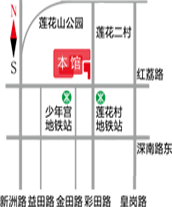
- Interview with Mr. Pan Gongkai, Dean of the Central Academy of Fine Arts
-
Guan Shanyue
在十一届美展艺术设计展复评期间组委会办公室对复评委员会主任、中国美协副主席、中央美术学院院长潘公凯先生进行了采访,潘先生就十一届美展设计展的相关问题谈了自己的看法。
他说,设计是从传统的工艺美术中生长出来的,现在已发展成一个非常庞大的系统,而不像传统的美术门类相对比较单纯,所以作品的门类多,从评审的角度来说,相互比较的难度非常大,比如一件服装和一栋房子,谁好谁坏,如何评?所以他认为,就艺术设计展区而言,评审工作的标准和体系还有待进一步完善,应该订立一些更细致的操作规则。比如一件工艺设计作品,我们要分几个步骤,先看他的设计图,然后要看他的模型,如果通过评审还需要看它的实际生产出来的产品等等,这些要求都要越细致越好。
潘院长说,从目前送展的作品情况来看,可能还有一些社会上的作品没有送上来。这是因为由全国美协来操作这个设计展,它实际上是从美术这个范畴扩出来的一部分,可能年轻人,特别是美术院校的学生非常感兴趣,因为很多美术院校的院长们也都是美协相关艺委会的委员,他们会把美展的信息带回来,鼓励师生们送作品参展。外面的一些设计师可能不太知道这个信息,也可能不熟悉全国美展的机制,今后这一块工作还应该加强。
当记者问到如何从三届全国美展设计展看中国的艺术设计学科的发展时,潘院长说,最大的特征就是快,设计的规模近年来呈爆炸性的增长,这和高等院校的推动是有很大关系的。他认为总体来说,中国当代艺术设计的发展还是健康的,即使存在一些问题,也是发展过程中必然要产生的,需要我们不断调整解决。因为和西方相比,我们的设计毕竟起步很晚,一些想法或做法还来不及考虑成熟,就已经先行实践了,很多事需要边做边调整。记者问,深圳去年刚刚成为联合国教科文组织认定的“设计之都”,紧接着今年又再次承办全国美展的艺术设计展,深圳方面期望在全国美展的平台上搭建一个国际交流的空间,邀请国际另五个“设计之都”的城市代表和中国设计艺术领域的专家举行一个论坛,深圳此举是尝试将中国美术展览成果向国际推广,也希望藉此能借鉴国外的经验和做法,请潘院长谈谈对此的看法。
潘院长的回答很干脆,是好事,这样的交流当然越多越好。
During the re evaluation of the 11th Art Exhibition and Design Exhibition, the organizing committee office interviewed Mr. Pan Gongkai, the director of the re evaluation committee, Vice Chairman of the China Artists Association, and Dean of the Central Academy of Fine Arts. Mr. Pan expressed his views on the relevant issues of the 11th Art Exhibition and Design Exhibition.
He said that design grew out of traditional arts and crafts and has now developed into a very large system, unlike traditional art categories that are relatively simple. Therefore, there are many categories of works, and from the perspective of evaluation, the difficulty of comparing them is very high. For example, a piece of clothing and a house, who is good and who is bad, and how to evaluate them? So he believes that in terms of art and design exhibition areas, the standards and system of evaluation work still need to be further improved, and more detailed operating rules should be established. For example, in a process design work, we need to divide it into several steps. First, we need to look at its design drawings, then we need to look at its model. If it passes the review, we also need to look at its actual produced products, etc. These requirements must be as detailed as possible.
Dean Pan said that based on the current situation of exhibited works, there may still be some works from society that have not been presented. This is because the National Artists Association operates this design exhibition, which is actually an extension of the field of art. Young people, especially students from art schools, may be very interested because many deans of art schools are also members of the relevant art committees of the Artists Association. They will bring back the information of the art exhibition and encourage teachers and students to send their works for exhibition. Some designers outside may not be familiar with this information or the mechanism of national art exhibitions, and this work should be strengthened in the future.
When asked by the reporter how to see the development of China's art and design discipline from the three national art exhibitions and design exhibitions, Dean Pan said that the biggest feature is speed, and the scale of design has shown explosive growth in recent years, which is closely related to the promotion of higher education institutions. He believes that overall, the development of contemporary Chinese art and design is still healthy. Even if there are some problems, they are inevitable in the development process and require us to continuously adjust and solve them. Because compared to the West, our design started very late, and some ideas or practices were already put into practice before they could be fully considered. There are many things that need to be adjusted while doing.
The reporter asked that Shenzhen had just become recognized as the "City of Design" by UNESCO last year, and then hosted another art and design exhibition for the National Art Exhibition this year. Shenzhen hopes to build an international exchange space on the platform of the National Art Exhibition, inviting representatives of five other "City of Design" cities and experts in the field of Chinese design and art to hold a forum. Shenzhen's move is an attempt to promote the achievements of Chinese art exhibitions to the international community, and also hopes to learn from foreign experiences and practices. Please share your views on this.
Dean Pan's answer was very straightforward, which is a good thing. Of course, the more such exchanges there are, the better.



